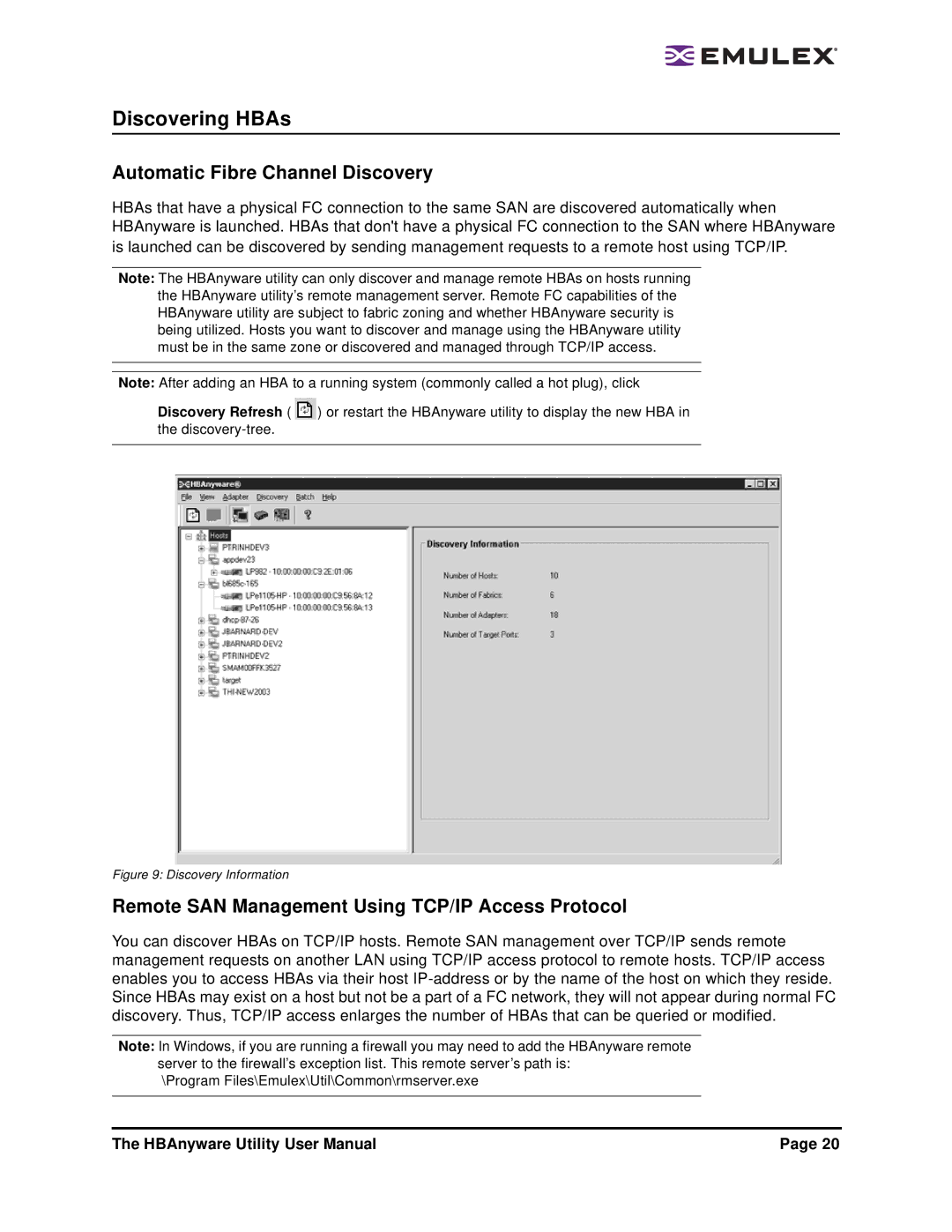
Discovering HBAs
Automatic Fibre Channel Discovery
HBAs that have a physical FC connection to the same SAN are discovered automatically when HBAnyware is launched. HBAs that don't have a physical FC connection to the SAN where HBAnyware is launched can be discovered by sending management requests to a remote host using TCP/IP.
Note: The HBAnyware utility can only discover and manage remote HBAs on hosts running the HBAnyware utility’s remote management server. Remote FC capabilities of the HBAnyware utility are subject to fabric zoning and whether HBAnyware security is being utilized. Hosts you want to discover and manage using the HBAnyware utility must be in the same zone or discovered and managed through TCP/IP access.
Note: After adding an HBA to a running system (commonly called a hot plug), click
Discovery Refresh ( ![]() ) or restart the HBAnyware utility to display the new HBA in the
) or restart the HBAnyware utility to display the new HBA in the
Figure 9: Discovery Information
Remote SAN Management Using TCP/IP Access Protocol
You can discover HBAs on TCP/IP hosts. Remote SAN management over TCP/IP sends remote management requests on another LAN using TCP/IP access protocol to remote hosts. TCP/IP access enables you to access HBAs via their host
Note: In Windows, if you are running a firewall you may need to add the HBAnyware remote server to the firewall’s exception list. This remote server’s path is:
\Program Files\Emulex\Util\Common\rmserver.exe
The HBAnyware Utility User Manual | Page 20 |
